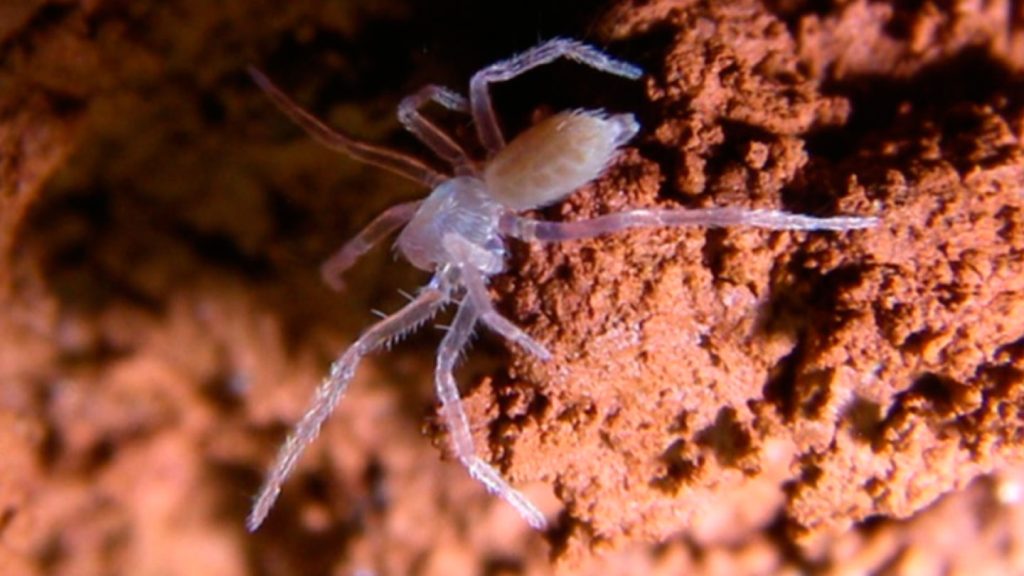A team of researchers discovered a new species of spider called Paleotoca diminas in Brazilian caves. These spiders have adapted to living in permanent darkness by lacking eyes and having specialized hairs that detect vibrations through the air. They make their homes in the abandoned burrows of extinct megafauna such as giant ground sloths or giant armadillos, indicating that they are a unique species with specific habitat requirements.
The physical features of Paleotoca diminas suggest that they belong to the long-spinneret ground spider family. However, further examination of their genitalia and legs suggests that they represent a new genus within this family, named Paleotoca. The spiders’ name, meaning “old house,” reflects the type of cave they inhabit, known as paleoburrows, which were likely excavated by giant ground sloths thousands of years ago.
This species is not the only arachnid found to inhabit paleoburrows in Brazil, as the researchers have previously described two other species that also make their homes in similar caves. Recent legislative changes in Brazil prioritizing the conservation of subterranean ecosystems have allowed researchers to continue studying these unique spiders. Understanding and preserving the ecosystems where these spiders live is crucial for their conservation and the overall biodiversity of the region.
The researchers are conducting further studies to explore the behavior and ecological roles of Paleotoca diminas and other spider species living in paleoburrows. By studying these spiders and their habitats, they aim to contribute to the preservation of these fragile underground ecosystems. This research is essential for maintaining biodiversity and understanding the complex relationships between species that inhabit these unique cave environments in Brazil.
In conclusion, the discovery of Paleotoca diminas highlights the importance of studying and conserving unique species and their habitats. By focusing on subterranean ecosystems and the creatures that thrive in them, researchers can contribute to understanding the biodiversity of Brazil and the conservation of these fragile environments. Continued research and conservation efforts are necessary to ensure the long-term survival of species like Paleotoca diminas and their ecosystems.


